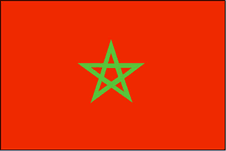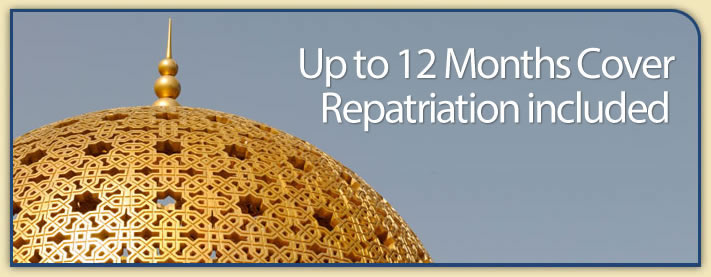Country Guide • Morocco

Morocco is located in the northwestern corner of Africa. It is bound by Western Sahara to the southwest, Algeria to the southeast and east, the Mediterranean sea to the northeast and the Atlantic Ocean to the west.
| Official Name | Kingdom of Morocco |
|---|---|
| Area | 409,200km² (157,993mile²) |
| Population | 31,689,000 |
| Continent | Africa |
| Population per mile² | 184 |
| Capital City | Rabat |
| Religions | The official religion is Islam with 99% of the population Sunni Muslims with a minority of Christians and Jews accounting for the remainder |
| Language | Arabic (officially) with Berber dialects, as well as French, Spanish and English |
| Government | Constitutional Monarchy |
| Currency | Dirham |
| GDP | $115 billion |
| GDP per Head | $3,900 |
| Natural Resources | Phosphates, iron ore, manganese, lead, zinc, fish and salt |
| Land Use | Arable Land 20% |
| Agriculture | Barley, wheat, citrus fruits, wine, vegetables, olives and livestock |
| Industry | Agriculture, Fertilizers, Fishing, Food Processing, Leather Goods, Mining, Textiles, Tourism and Wine |
| Tourism | Morocco is the ideal starting point for the backpacker or traveller to Africa. Within easy reach of Europe and with names like Tangier, Casablanca, Marrakesh it is enough to conjour up the imagination of even the most novice of travellers. There are of course the open-air markets throughout the country which are piled high with rugs, woodwork, and jewellery and leather. For sun-worshippers, there are miles of beaches |
| Natural Hazards | Northern mountains geologically unstable and subject to earthquakes and periodic droughts |
| Health Risks | Malaria in the northern coastal reaches of Morocco. Many areas of the Western Sahara are mined |
| Climate | The climate varies from area to area. The coast has a warm, Mediterranean climate tempered on the eastern coast by southwest trade winds. Inland areas have a hotter, drier, continental climate. In the south of the country, the weather is very hot and dry throughout most of the year, with the nights coolest in the months of December and January. Rain falls from November to March in coastal areas. Mostly dry with high temperatures in summer. Average temperature ranges in Rabat are from 8 to 17°C in January to 18 to 28°C in August |
| Time | GMT/UTC- No UTC/GMT offset |
| National Days | January 11 Manifesto of Independence, February 12 Aïd al-Adha (Feast of the Sacrifice), March 5 Fatih Mouharram (Muslim New Year), May 1 Labour Day, May 14 Aïd al-Mawlid (Prophet’s Birthday), July 30 Feast of the Throne. August 14 Fête Oued Eddahab (Oued Eddahab Allegiance Day), August 20 Révolution du Roi et du Peuple (The King and the People’s Revolution Day), August 21 King Mohamed’s Birthday, November 6 Marche Verte (Anniversary of the Green March). November 18 Fête de l’Indépendence (Independence Day) |
| Visas | British nationals and citizens of the EU, US, Australia and New Zealand do not require entry visas to Morocco for the purpose of tourism. Travellers should also be aware that the border between Algeria and Morocco is closed, and no attempt should be made to cross it at any point. You should ensure when entering the country, particularly during the busy summer months, that your passports are stamped. Some tourists have experienced difficulties leaving the country because their passports bear no entry stamp |
| British Embassy | Embassy Details |
Information Only
The content above is for information purposes only and we have tried to ensure that the information is as accurate as possible. We cannot accept any responsibility for any inconvenience, loss or injury as a result of the information above. You should always check and verify any critical information like visas, health and safety and customs with the relevant authorities before you travel since information can change at any time.



